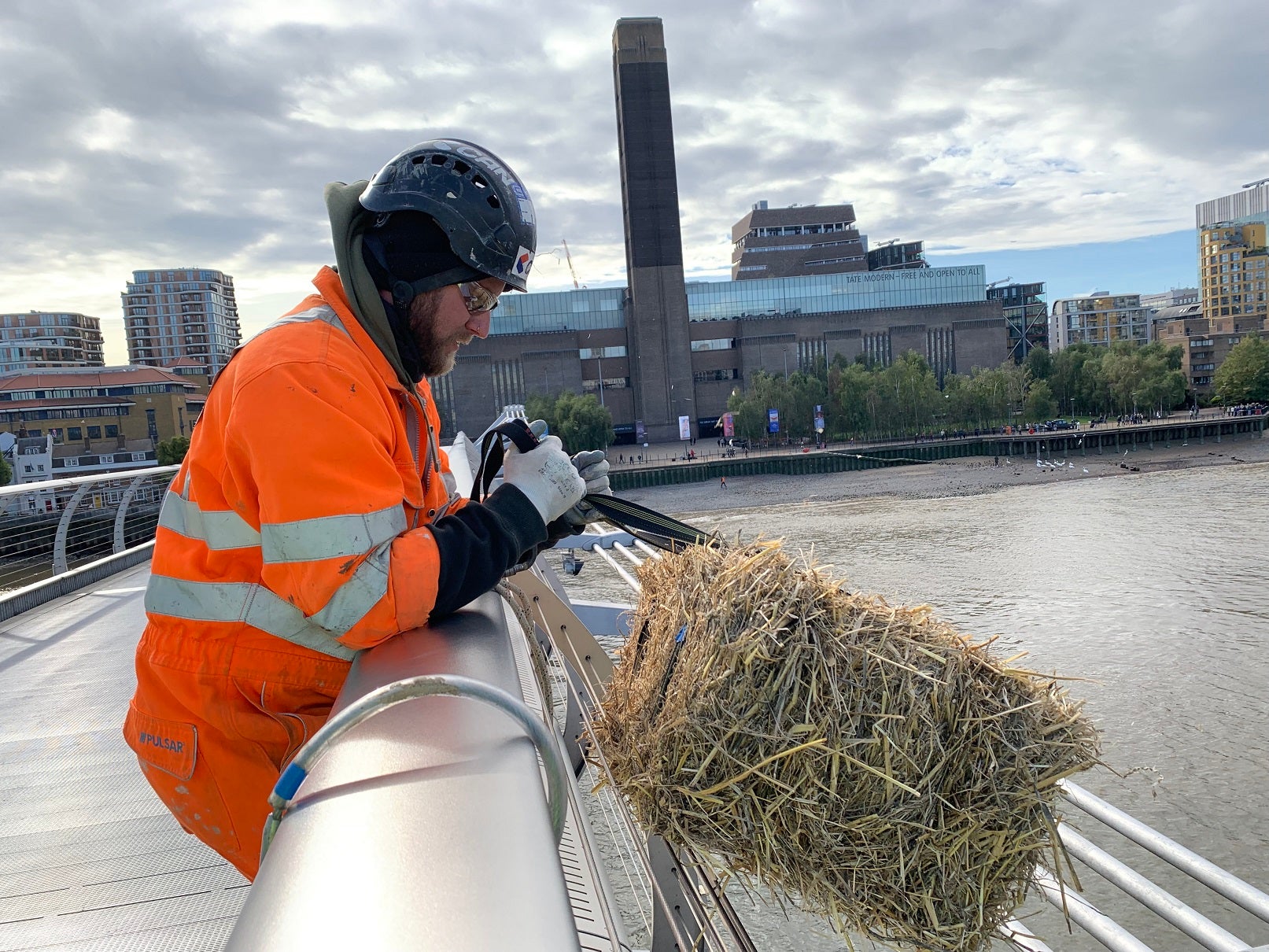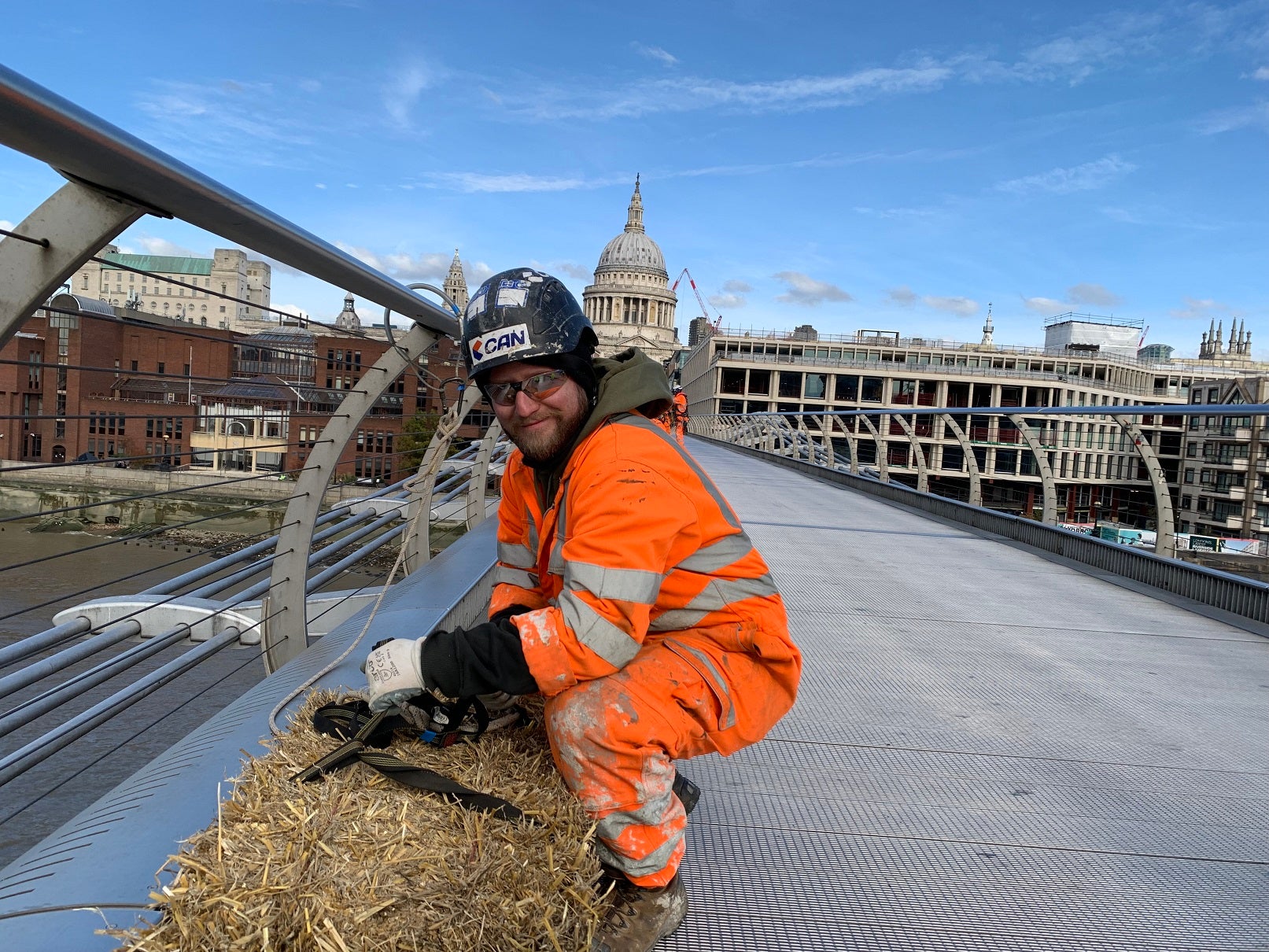Why was a bale from Essex hanging over Millennium Bridge?
A bale of hay is being suspended over a London bridge in a centuries-old tradition letting ships know there’s reduced headroom

Your support helps us to tell the story
From reproductive rights to climate change to Big Tech, The Independent is on the ground when the story is developing. Whether it's investigating the financials of Elon Musk's pro-Trump PAC or producing our latest documentary, 'The A Word', which shines a light on the American women fighting for reproductive rights, we know how important it is to parse out the facts from the messaging.
At such a critical moment in US history, we need reporters on the ground. Your donation allows us to keep sending journalists to speak to both sides of the story.
The Independent is trusted by Americans across the entire political spectrum. And unlike many other quality news outlets, we choose not to lock Americans out of our reporting and analysis with paywalls. We believe quality journalism should be available to everyone, paid for by those who can afford it.
Your support makes all the difference.A xlb bale of straw is being suspended over Millennium Bridge to warn ships on the Thames that headroom is reduced.
According to the Port of London’s Thames Byelaws, a ‘bundle of straw large enough to be conspicuous’ must be suspended when the headroom of a bridge arch or span is reduced from its usual limits.
The age-old ritual was enacted today as contractors working for the bridge owner, City Bridge Foundation, began installing safety netting under the 23-year-old structure.

Tim Fletcher, a spokesperson for the Foundation told The Independent that the bale was procured from Button Farm in Harrongate, Brentwood in Essex and transported in to London. “We change it as and when needed,” he said. “We bring the bale down and the contractors will suspend it from the bridge.”
Mr Fletcher was careful to say that the bale of straw should not be confused with hay as the latter is used as animal food.
The footbridge closed on Saturday and is due to remain so until Sunday, 5 November, to allow for the replacement of a synthetic membrane between the aluminium bridge deck and the steel structure underneath.
City Bridge Foundation said: “The bundle of straw is lowered by our contractor when they’re doing work under the bridge, in this case to install netting ahead of work to replace the separation layer between the aluminium bridge deck and the steel structure underneath.”

The law is article 36.2 of the Port of London Thames Byelaws and states: “When the headroom of an arch or span of a bridge is reduced from its usual limits but that arch or span is not closed to navigation, the person in control of the bridge must suspend from the centre of that arch or span by day a bundle of straw large enough to be conspicuous and by night a white light.
The Foundation added: “As a 900-year-old charity which maintains five Thames crossings and is London’s biggest independent charity funder, we’re proud of the part we’ve played in the history of London and our modern day role looking after some of the capital’s key transport infrastructure.”
Work on the bridge is being carried out around the clock to get the job done as quickly as possible. Pedestrian diversion routes are in place via Southwark Bridge and Blackfriars Bridge. The Foundation owns five bridges across London including Tower Bridge.



Join our commenting forum
Join thought-provoking conversations, follow other Independent readers and see their replies
Comments